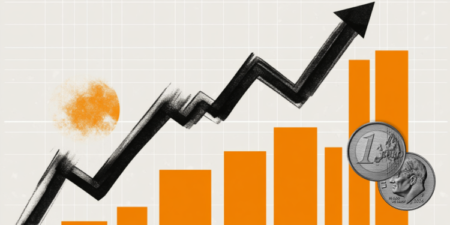- The Japanese Yen bulls take a brief pause amid worries about the economic fallout from Trump’s tariffs.
- The risk-off mood and relatively hawkish BoJ expectations could reinstate a bullish tone for the JPY.
- The USD selling bias contributes to capping USD/JPY ahead of the release of the crucial US NFP report.
The Japanese Yen (JPY) edges lower during the Asian session on Friday amid worries about the potential economic fallout from US President Donald Trump’s reciprocal tariffs. The concerns forced investors to scale back their bets that the Bank of Japan (BoJ) will hike interest rates at a faster pace and undermine the JPY. However, signs of broadening inflation in Japan keep the door open for further policy tightening by the BoJ.
This, along with the prevalent risk-off environment, could offer some support to the safe-haven JPY. Apart from this, sustained US Dollar (USD) selling, fueled by expectations that Trump’s tariffs will trigger a US recession and bets that the Federal Reserve (Fed) will resume its rate-cutting cycle soon, should contribute to capping the USD/JPY pair. Traders might also opt to wait for the release of the US Nonfarm Payrolls (NFP) report.
Japanese Yen draws support from Trump’s tariffs-inspired risk-off mood, divergent BoJ-Fed expectations
- In a major blow to Japan’s auto industry, which accounts for around 3% of gross domestic product, US President Donald Trump’s 25% tariff on car imports takes effect as scheduled on Thursday. Moreover, bets for early interest rate hikes by the Bank of Japan retreated amid concerns that harsher US reciprocal tariffs announced on Wednesday could negatively impact Japan’s economy.
- The yield on the benchmark 10-year Japanese government bond tanked on Thursday, posting its biggest drop since August 5 and hitting its lowest level since February 26. This, in turn, is seen weighing on the Japanese Yen during the Asian session on Friday and assisting the USD/JPY pair to register a modest recovery from the lowest level since October touched the previous day.
- Meanwhile, Japan’s Prime Minister Shigeru Ishiba said on Thursday that he will not hesitate to directly approach US President Donald Trump, if appropriate, and will continue to demand the US to reconsider tariff measures. Separately, Japan’s Finance Minister Shunichi Kato warned earlier this Friday that tariffs could have a significant impact on trade systems and global economies.
- BoJ Governor Kazuo Ueda said that Trump tariffs are likely to put downward pressure on Japan, and global economies, though reiterated that the BoJ will guide monetary policy appropriately from the standpoint of sustainably achieving a 2% inflation target. BoJ Deputy Governor Shinichi Uchida said that the central bank will raise interest rates if underlying inflation heightens.
- This comes on top of strong Tokyo consumer inflation figures on Friday, which backs the case for further tightening by the BoJ. In contrast, traders are ramping up expectations for the Federal Reserve to start lowering borrowing costs again in June and cut interest rates four times this year amid concerns that Trump’s policies will trigger an all-out trade war and a global recession.
- The outlook, in turn, led to the overnight slump in the US Treasury bond yields, dragging the yield on the benchmark 10-year US government bond and the US Dollar to their lowest level since October. This might keep a lid on the USD/JPY pair’s attempted recovery. Traders might also opt to wait for the release of the US monthly employment details before placing aggressive bets.
USD/JPY seems vulnerable to further downside extension below the 145.00 mark, toward the 144.50-144.45 support
From a technical perspective, the overnight break below the previous year-to-date low, around the 146.55-146.50 area, was seen as a fresh trigger for the USD/JPY bears. Moreover, oscillators on the daily chart are holding deep in negative territory and are still away from being in the oversold zone. This, in turn, suggests that the path of least resistance for spot prices remains to the downside and supports prospects for a further depreciating move. Hence, a subsequent fall below the overnight swing low, around the 145.20-145.15 region en route to the 145.00 mark and the next relevant support near the 144.50-144.45 zone, looks like a distinct possibility.
On the flip side, any attempted recovery back above the 146.50-146.55 region (the previous YTD low) is likely to attract fresh sellers and remain capped near the 147.00 round figure. A sustained strength beyond the latter, however, might trigger a short-covering rally and lift the USD/JPY pair to the 147.75-147.80 hurdle. This is closely followed by the 148.00 mark, which if cleared decisively should pave the way for additional gains towards the 148.60 intermediate barrier en route to the 149.00 mark and the 149.20 horizontal zone.
Japanese Yen FAQs
The Japanese Yen (JPY) is one of the world’s most traded currencies. Its value is broadly determined by the performance of the Japanese economy, but more specifically by the Bank of Japan’s policy, the differential between Japanese and US bond yields, or risk sentiment among traders, among other factors.
One of the Bank of Japan’s mandates is currency control, so its moves are key for the Yen. The BoJ has directly intervened in currency markets sometimes, generally to lower the value of the Yen, although it refrains from doing it often due to political concerns of its main trading partners. The BoJ ultra-loose monetary policy between 2013 and 2024 caused the Yen to depreciate against its main currency peers due to an increasing policy divergence between the Bank of Japan and other main central banks. More recently, the gradually unwinding of this ultra-loose policy has given some support to the Yen.
Over the last decade, the BoJ’s stance of sticking to ultra-loose monetary policy has led to a widening policy divergence with other central banks, particularly with the US Federal Reserve. This supported a widening of the differential between the 10-year US and Japanese bonds, which favored the US Dollar against the Japanese Yen. The BoJ decision in 2024 to gradually abandon the ultra-loose policy, coupled with interest-rate cuts in other major central banks, is narrowing this differential.
The Japanese Yen is often seen as a safe-haven investment. This means that in times of market stress, investors are more likely to put their money in the Japanese currency due to its supposed reliability and stability. Turbulent times are likely to strengthen the Yen’s value against other currencies seen as more risky to invest in.
Read the full article here
















